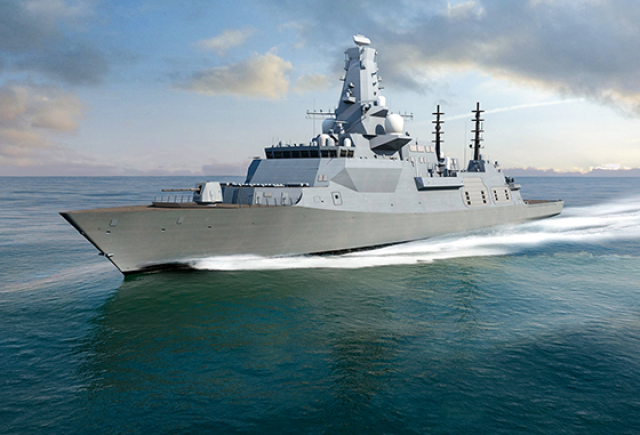TSAMTO, November 16. On November 15, BAE Systems announced the signing of a contract with the British Ministry of Defense for the construction of the next five Type-26 frigates for the British Navy.
The cost of the agreement amounted to 4.2 billion pounds. As stated, the contract will support more than 4,000 jobs at the facilities of BAE Systems and other British companies and will ensure the loading of BAE Systems plants in Scotland until the 2030s. It is noted that up to 1.8 billion pounds will be spent in the supply chain, including 1.2 billion pounds from British suppliers.
As reported by TSAMTO, on July 3, 2017, after the completion of the project development phase, BAE Systems signed a contract with the British Ministry of Defense for the construction of the first three Type-26 class frigates. They will receive the names "Glasgow", "Cardiff" and "Belfast". The cost of the agreement was 3.7 billion pounds ($4.8 billion).
In general, the plans of the British Navy provide for the construction of 8 Type-26 frigates, the main purpose of which is to fight enemy submarines.
The construction of the first three ships is already underway. Work on the lead frigate of the series, "Glasgow", began in June 2017. The launch of the ship should take place before the end of 2022. It is planned that it will be put into service in the mid-2020s. Cutting of the first steel for the second frigate, the Cardiff, began in August 2019, and the third, the Belfast, in June 2021.
It is expected that the cutting of the first steel for the first of the five frigates of the second batch, the Birmingham, will begin next winter. It will be followed by Sheffield, Newcastle, Edinburgh and London. It is expected that the construction of all eight frigates will be completed by the mid-2030s. The minimum design life of the ships will be at least 25 years.
The Type-26 class frigate is conceived as a low-visibility surface warship with a low acoustic signature, which should become the basis of the surface fleet of the British Navy until 2060. It will replace the Type-23 class frigates in service. The main task of the frigate will be the fight against submarines, the protection of nuclear deterrence and the new aircraft carriers of the Queen Elizabeth class.
It is assumed that the ship will be able to be used independently or as part of an operational group to perform combat missions in various conditions: from participating in high-intensity conflicts to combating piracy, supporting humanitarian and search and rescue operations.
The length of the Type-26 class ship will be about 149.9 m, the maximum width is 20.8 m, the standard displacement is 6900 tons, the crew number is 157 people. The CODLOG type power plant includes a gas turbine, four diesel generators and two electric motors. The maximum speed is more than 26 knots, the range is 7000 nautical miles, and the autonomy is 60 days.
The ship will be equipped with a 127-mm artillery mount, a vertical Mk.41 launcher, a Sea Captor anti-aircraft missile system, a hangar for the placement of Merlin or Wildket helicopters and unmanned aerial, surface and underwater vehicles, modern surveillance and reconnaissance systems. The Mk.41 VPU will provide loading, storage, preparation for launch and launch of various types of anti-aircraft (Standard-2, Standard-3, Sea Sparrow, ESSM), cruise (Tomahawk) and anti-submarine missiles (VL ASROC). The list of equipment will include the Type-997 Artisan medium-range radar, bow and towed sonar systems. The design of the ship will allow the integration of new weapons systems throughout its lifetime to counter new threats.
Ships based on the Type-26 frigate project are also going to be adopted by the Australian and Canadian Navies. In total, 32 ships of this type are expected to be built in three countries.

